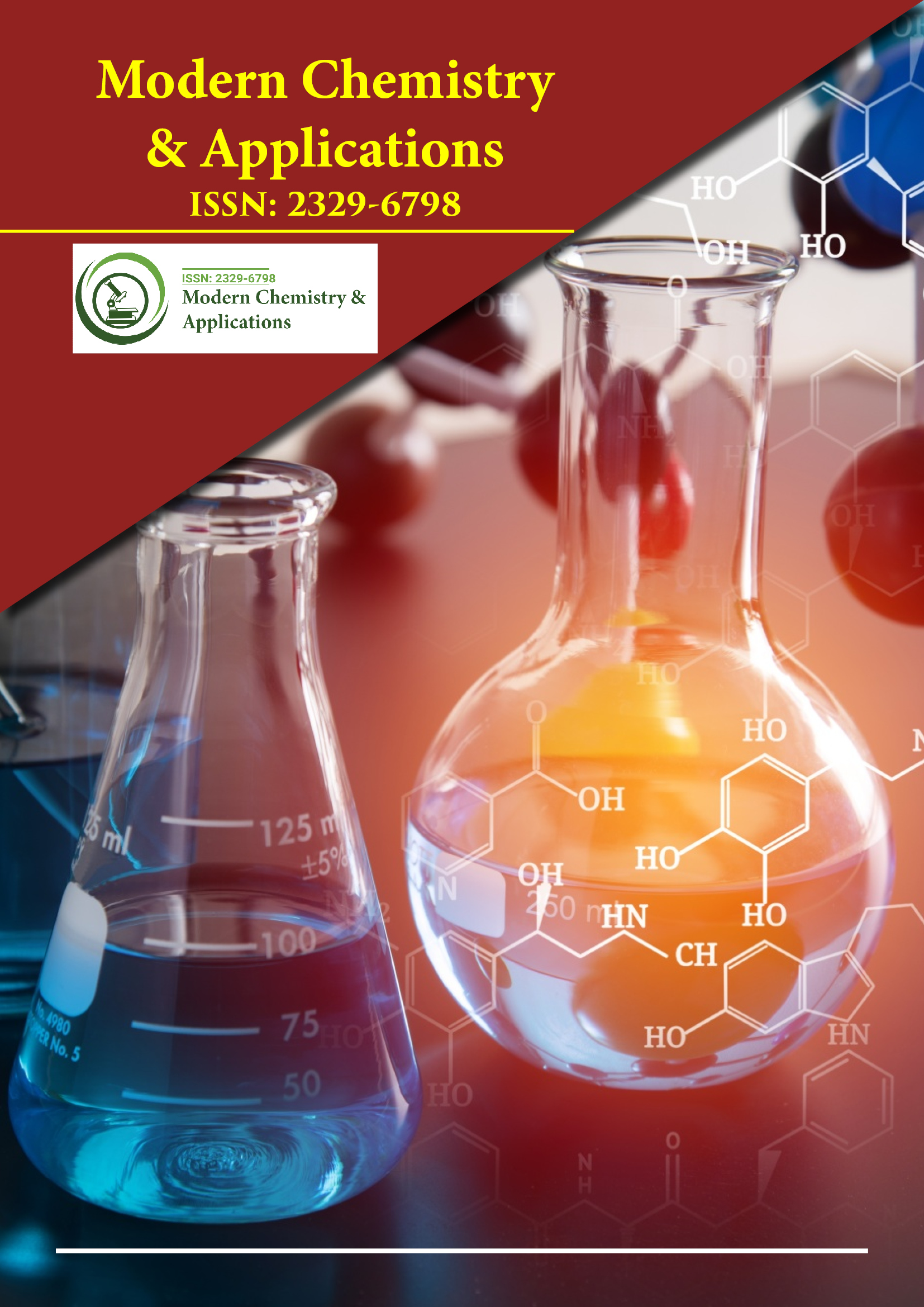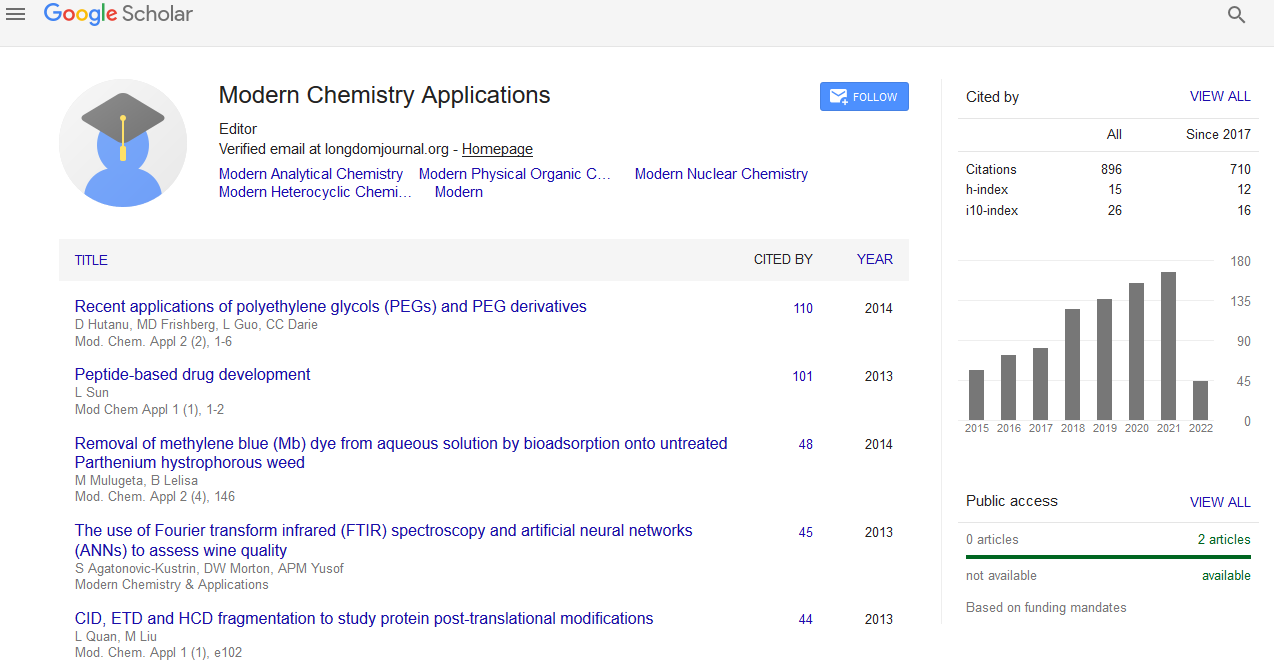Indexed In
- Open J Gate
- JournalTOCs
- RefSeek
- Hamdard University
- EBSCO A-Z
- OCLC- WorldCat
- Scholarsteer
- Publons
- Geneva Foundation for Medical Education and Research
- Google Scholar
Useful Links
Share This Page
Journal Flyer

Open Access Journals
- Agri and Aquaculture
- Biochemistry
- Bioinformatics & Systems Biology
- Business & Management
- Chemistry
- Clinical Sciences
- Engineering
- Food & Nutrition
- General Science
- Genetics & Molecular Biology
- Immunology & Microbiology
- Medical Sciences
- Neuroscience & Psychology
- Nursing & Health Care
- Pharmaceutical Sciences
Adsorption study in aqueous medium of arsenite by goethite nanorods
5th Global Chemistry Congress
September 04-06, 2017 | London, UK
Herlys Viltres Cobas, Oscar F Odio Chacon, Susel Del Sol Fernandez, Raul Borja Urby and Edilso Reguera Ruiz
CICATA-IPN, Mexico
IMRE, Cuba
CNMN-IPN, Mexico
Posters & Accepted Abstracts: Mod Chem Appl
Abstract:
Arsenic is one of the most widespread inorganic pollutants worldwide and represents a significant potential risk to human health and the biosphere. It is well known that arsenic is highly toxic and carcinogenic; at present, there are reports of diverse countries with arsenic concentrations in drinking water higher than those proposed by the World Health Organization (10 μg/L). Nanomaterials and nanotechnologies inspire new possible solutions to major environmental issues nowadays. It has been reported that adsorption strategies using iron oxyhydroxide as goethite are very efficient for the removal of arsenic in drinking waters; the adsorption mechanism is not yet clear. In order to shed light on this subject, we attempt to study the interactions between arsenic species and α-FeOOH nanorods in aqueous medium. Goethite nanorods were prepared using a precipitation method with FeCl3 as metal source and KOH aqueous solution as precipitating agent. As-synthesized nanorods were put in contact with As2O3 solutions at room temperature at pH 4 and 7. Goethite particles were characterized by DRX, TEM, FT-IR and XPS. Results showed that goethite nanoparticles had 30 nm wide and 410 mm long, and a narrow size distribution. The presence of arsenic on particles surface was confirmed, which is more remarkable when pH=7 condition is employed. On the other hand, when As (III) species interact with the nanoparticle surface, oxidation to As (V) occurs, which produces the surface reduction. Besides, after adsorption experiment, it was evidenced from FTIR and XPS that once arsenic species interact with the nanoparticles, they form doubly protonated monodentate and simply protonated monodentate complex of As(III) at pH=4 and 7, respectively, and bidentate complex of As(V) after As(III) oxidation, in both conditions. The developed methodology could be implemented in the water treatment industries, reducing the costs of the processes and making them more environmental friendly.
Biography :
Herlys Viltres Cobas has expertise in the synthesis and characterization of nanomaterials. She has completed her Master's degree at Center for Research in Applied Science and Advanced Technology (CICATA), Legaria Unit, National Polytechnic Institute, Mexico City, Mexico. Currently, she is a PhD student at CICATA, Legaria Unit. She worked on the synthesis and characterization of iron oxide nanoparticles (magnetite, hematite and goethite) to remove arsenic from the aqueous medium.


